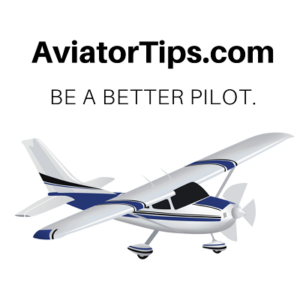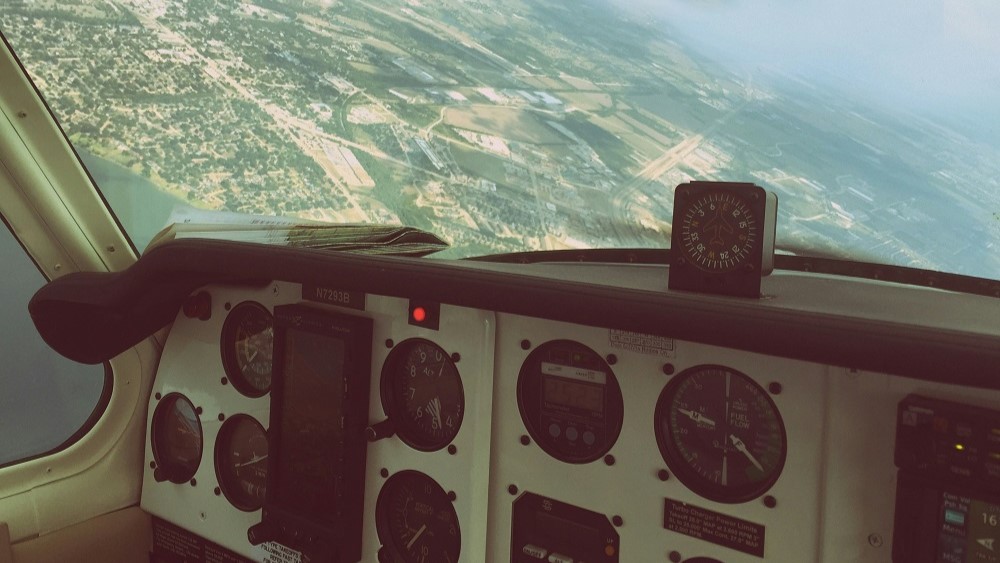Autopilot is one of the most useful and misunderstood tools in a pilot’s toolbox. For many student and newly minted private pilots, autopilot may seem like something only used in airliners or high-performance aircraft. But the truth is, many general aviation planes, including trainers, have some form of autopilot installed.
Whether you’re just starting your training or you’ve recently earned your certificate, understanding how autopilot works can make you a better, safer, and more confident pilot.
What Is Autopilot?
Autopilot is a system that helps fly the airplane by controlling one or more of its axes: pitch (up and down), roll (bank left and right), and sometimes yaw (rudder input). The system uses small motors called servos to move the control surfaces based on your selected settings.
In simple terms, autopilot helps keep the plane flying straight and level, or along a planned route, without constant manual input. But it doesn’t replace the pilot. It’s a tool, not a substitute for hands-on flying.
Types of Autopilot Systems
Autopilot systems come in several levels of complexity. Here are the most common types found in general aviation:
1. Wing Leveler (Single-Axis Autopilot)
This is the simplest type. It keeps the wings level by managing the ailerons. Great for basic stability, but it does not manage climb, descent, or altitude.
2. Two-Axis Autopilot
Controls both pitch and roll. This system can maintain heading and altitude and can follow a navigation course from a GPS or VOR. Most general aviation autopilots fall into this category.
3. Three-Axis Autopilot
Adds rudder control, improving coordination, especially in high-performance or complex aircraft. Less common in small planes but found in more advanced general aviation aircraft.
4. Integrated Flight Control Systems
These are found in glass cockpit-equipped aircraft like the Garmin G1000. They combine autopilot with flight director systems, altitude preselect, vertical navigation (VNAV), and more. These are powerful tools but require more knowledge to operate safely.
How Autopilot Works
Autopilot systems receive data from the airplane’s instruments and navigation equipment, then send signals to servos that control the flight controls. The pilot sets what the system should do, such as hold altitude, track a GPS course, or maintain a heading.
Most systems have a control panel with modes such as:
- HDG (Heading Mode): Follows the selected heading on the heading bug.
- NAV (Navigation Mode): Follows a course from GPS, VOR, or other nav source.
- ALT (Altitude Hold): Maintains current altitude.
- VS (Vertical Speed): Climbs or descends at a selected rate.
- AP (Autopilot Master): Turns the autopilot on or off.
Glass cockpit systems may have additional features like:
- FLC (Flight Level Change): Maintains a selected airspeed during climb or descent.
- VNAV (Vertical Navigation): Automatically descends to reach crossing restrictions.
- APR (Approach Mode): Flies an instrument approach, including glideslope capture.
Benefits of Autopilot
1. Reduced Workload
Autopilot helps you manage the flight more easily, especially during cruise or on long legs. This lets you focus on navigation, communication, weather, or planning the next phase of flight.
2. Improved Precision
Autopilot can fly a heading or course more accurately than most humans. This can be helpful during approaches or when flying in busy airspace where precise control is needed.
3. Better Fatigue Management
Even on short flights, mental fatigue can creep in. Autopilot allows you to stay fresh by taking care of routine flying tasks. This can improve decision-making and situational awareness.
4. Training Opportunities
Using autopilot in training teaches you how to manage modern flight systems. If you plan to move into instrument flying or more advanced aircraft, autopilot will play a major role.
When to Use Autopilot
Here are some good times to consider using autopilot:
- During cruise flight to reduce fatigue
- While entering or maintaining holding patterns
- When managing complex airspace transitions
- During long straight-in instrument approaches
- While troubleshooting an issue or dealing with a distraction
But always make sure you’re monitoring the system. The autopilot is flying, but you’re still in command.
When Not to Use Autopilot
There are also times when it’s better to hand-fly the airplane:
- During takeoff and landing (unless specifically approved and trained)
- In turbulent conditions where autopilot can become unstable
- If you’re unfamiliar with the autopilot and need more practice
- During early training, when hand-flying builds essential skills
Always follow the aircraft’s Pilot Operating Handbook (POH) or AFM (Aircraft Flight Manual) for limitations.
Common Autopilot Mistakes
1. Engaging Autopilot Too Soon
Some pilots activate autopilot right after takeoff. This can lead to disorientation or errors, especially if the system is not set up properly. Wait until you’re established in a stable climb before engaging.
2. Not Verifying Mode Changes
Autopilots only do what you tell them. Always verify the active mode on the display or annunciator. Just because you pressed NAV doesn’t mean it captured the course.
3. Over-Reliance
Don’t let autopilot be a crutch. Always be ready to hand-fly if needed. Many accidents have occurred because pilots didn’t recognize autopilot errors or didn’t know how to take over quickly.
4. Ignoring Altitude or Airspeed
Autopilot doesn’t prevent all errors. You still need to watch your instruments. A wrong setting can put you into a climb or descent that exceeds safe limits.
5. Forgetting the Disconnect Button
Every pilot should know how to quickly disengage the autopilot. Learn where the disconnect button is on the yoke or panel and use it during training. Practice goes a long way when something unexpected happens.
Staying Proficient
Autopilot skills, like flying skills, require practice. Here are some tips to stay sharp:
- Use autopilot often but practice disengaging and flying manually too
- Regularly review the pilot’s guide for your autopilot model
- Set up and fly mock instrument approaches in VFR conditions
- Review how to use modes like ALT hold, NAV, and APR
- Practice partial panel hand-flying in case the autopilot or associated systems fail
Autopilot and the Checkride
If you’re a student preparing for your checkride, you’re not expected to be an autopilot expert. In fact, many checkride aircraft don’t even have one installed.
However, if your training aircraft does have an autopilot, your examiner may ask basic questions such as:
- How do you turn it on and off?
- What modes are available?
- What are its limitations?
- What do you do if it fails?
Knowing how to answer those questions shows good systems knowledge, which is part of being a safe pilot.
Autopilot in the Future
As avionics continue to evolve, autopilot systems are becoming more advanced and more common. Even light sport aircraft now offer integrated autopilots. Some modern systems can even fly coupled go-arounds or hold flight paths in emergencies.
Eventually, some private aircraft may include envelope protection or automatic emergency landing capabilities, like Garmin’s “Autoland” system. These innovations are exciting, but they still depend on the pilot understanding the systems and staying engaged.
Final Thoughts
Autopilot is not just for airline pilots. It’s a powerful tool that can make your flying smoother, safer, and less stressful. But like any tool, it must be used correctly. If you’re a student or newly certificated private pilot, take the time to learn how your system works, and use it in a thoughtful, intentional way.
Remember: you are the pilot in command. The autopilot works for you, not the other way around.
Fly safe, stay sharp, and enjoy the freedom that comes with mastering your aircraft, whether by hand or with a little help from technology.
Sources:
– FAA: *Pilot’s Handbook of Aeronautical Knowledge*
– Garmin: *GFC 500 Pilot’s Guide*
– AOPA: *How to Use Your Autopilot*
– Boldmethod: *Autopilot Modes Explained*
– ASA: *Instrument Flying Handbook*
Recent Posts
The aviation world is changing, and electric aircraft are at the center of this transformation. For student pilots and new private pilots, this shift brings exciting opportunities along with a few...
Mastering the Switch: How to Transition from Steam Gauges to Glass Cockpits
Transitioning from traditional round-dial instruments to a glass cockpit is one of the most significant changes a private pilot can make. While it may feel intimidating at first, the transition is...


